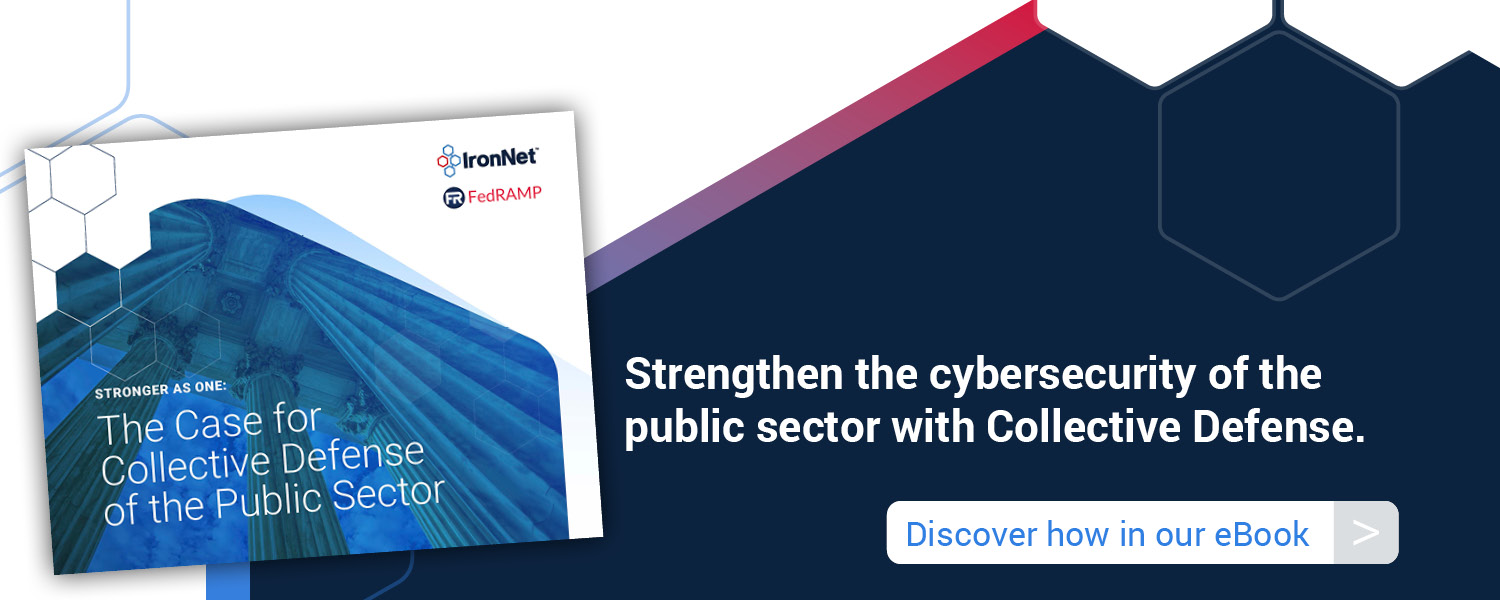“The United States now operates in a cyber landscape that requires a level of data security, resilience, and trustworthiness that neither the U.S. government nor the private sector alone is currently equipped to provide. ... If the U.S. government cannot find a way to seamlessly collaborate with the private sector to build a resilient cyber ecosystem, the nation will never be secure.”
— U.S. CYBERSPACE SOLARIUM COMMISSION REPORT, MARCH 2020
IronNet is committed to answering the U.S. Solarium Commission’s call to action by enabling Collective Defense — that is, the ability for public and private sectors to share anonymous threat intelligence in real time in order to defend as a unified front. Armed with threat knowledge based on the detection of adversarial behaviors on the network, the public sector has the support it needs to raise the bar on cybersecurity to ensure national security.
As we lead the movement toward Collective Defense in cybersecurity, IronNet has continued to strengthen its alignment with the needs of federal agencies and the companies across the federal supply chain. Given its mission-critical security needs, the public sector no longer can safeguard itself with a traditional, siloed approach to cybersecurity, especially as adversaries, more and more, are accessing targets through weak spots in the supply chain. Without question, visibility across the private/public ecosystem through Collective Defense is paramount.
Lessons learned from the SolarWinds cyber attack
As the SolarWinds/SUNBURST attack exposed, the reality today is that organizations across the public and private sectors are tightly interconnected in a complex ecosystem of peer agencies and organizations, partners, and suppliers — large and small — within and across governments and private enterprises.
As a result, the first target in a cyber attack is not always a single organization but rather a web of interconnected entities, including vulnerable, smaller enterprises within the federal supply chain that often do not have the resources to implement all the cyber defenses needed to withstand sophisticated attacks.
Attackers are getting more powerful, in part due to a rise in collaboration, or “collective offense.” Simply put, the bad guys are collaborating more quickly, effectively, and profitably than ever — from increased sharing of data on the dark web and exploit tools to successful breaches, cyber-offense outsourcing by nation-state actors, and the rising cottage industry of various independent “cyber mercenary” groups. Most advanced attackers today, moreover, leverage targeted techniques that are designed to evade traditional cybersecurity tools.
The burning question at hand is this: if adversaries are working together to attack large swaths of public and private sector entities at once, why are we not working together to defend against them?
Perhaps Microsoft CEO Brad Smith says it best when sounding the call for urgency to bridge the public and private sectors for the greater good of our shared security: “The defense of democracy requires that governments and technology companies work together in new and important ways — to share information, strengthen defenses, and respond to attacks.”
Now is the time to take action against aggressive adversaries. Now is the time for Collective Defense.
Learn more about how to defend the public sector in our eBook: "Stronger as one: The case for Collective Defense of the public sector."


.png)

